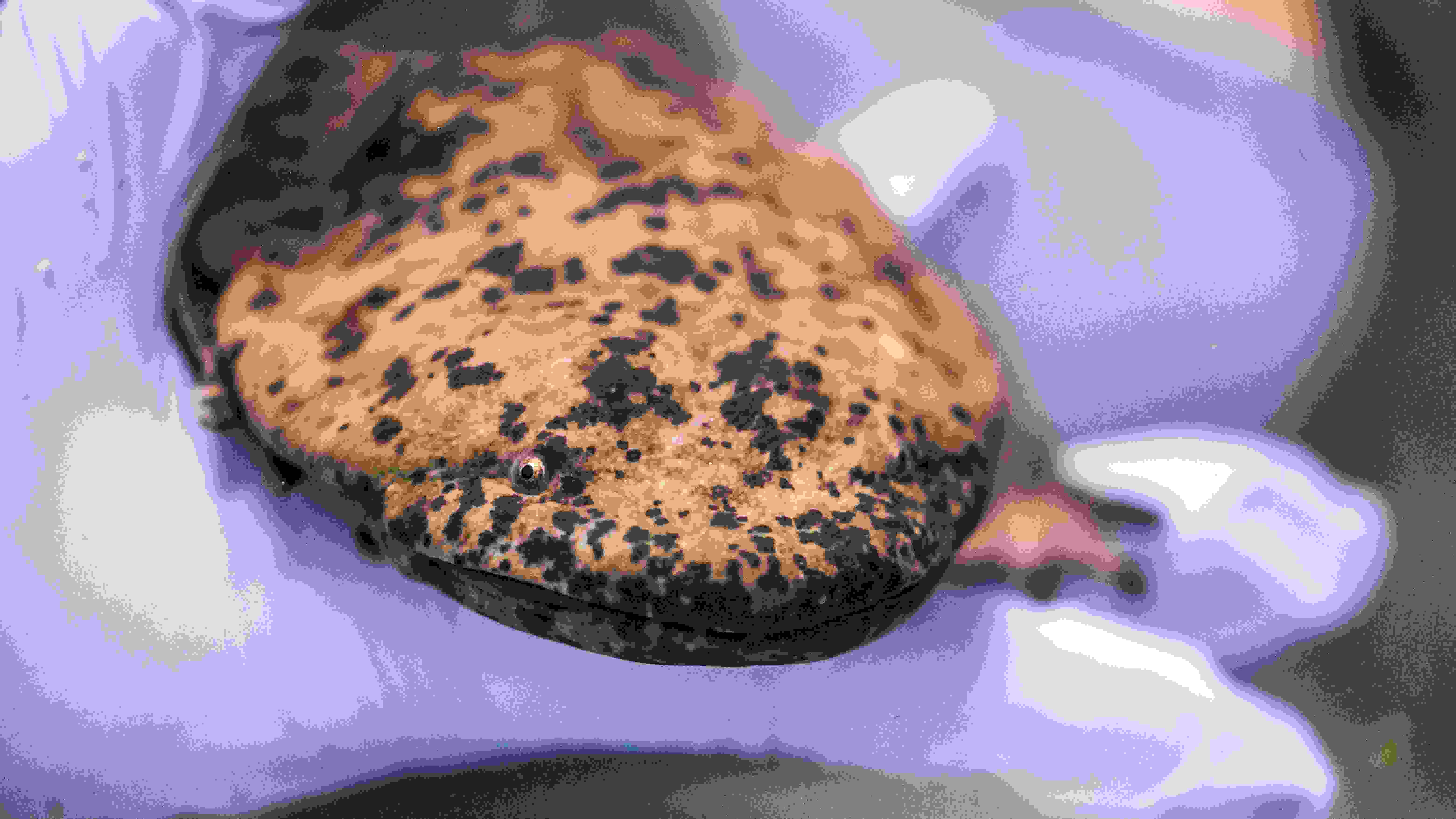
Animal
12:08, 03-Apr-2019
Rescued Chinese giant salamander finds home in London Zoo
Alok Gupta

Rescued from the clutches of smugglers, a rare Chinese giant salamander is going on display at London Zoo on Wednesday.
Cozily living in the zoo's tank, the salamander has been named Professor Lew, meaning "dragon keepers" in Chinese.
Smugglers hid Lew, along with four other salamanders, in a cereal box. One of them was already dead by the time Border Security Force discovered them.
"We work closely with Border Force to identify unusual animals, but even I was astonished to see that they were Chinese giant salamanders – one of the world's most critically endangered amphibians," Ben Tapley, curator of amphibians at Zoological Society of London (ZSL), said.
Once abundant in China, the giant salamander figured prominently in its culture. A recent survey found only 24 individuals living in the wild. A four-year study carried out from 2014 to 2018 at 97 sites in 16 Chinese provinces was a global attempt to revive the species.
Massive demand for their meat, coupled with poor conservation methods, is driving Chinese giant salamanders – the world's largest amphibians – to the brink of extinction.
The mixing of species through farming has led to the hybridization of the Chinese giant salamander that diverged over four million years ago, experts said.
In a bid to revive the species population, the Chinese government provided "Class II" protection to the salamanders.
A captive breeding program was also initiated in hundreds of commercial farms to boost their population. In order to ensure sustainable growth, only second-generation giant salamanders have been allowed for trading.
The country's Ministry of Agriculture supports widespread releases of farmed animals as a conservation measure. But experts believe that the country's salamander conservation program needs improvement.
"Paradoxically, this approach risks mixing genetic lineages and spreading wildlife disease – which is why the study's authors have called for the establishment of captive populations of genetically distinct lineages for the specific purpose of conservation breeding," Tapley told CGTN.
During the survey, the research team also interviewed thousands of residents to find out when they last saw the species in the wild. On average, the last sighting was an astonishing 19 years ago.
Concerned over the possible extinction of salamanders, China is establishing a National Giant Salamander Nature Reserve. Authorities are planning to demolish most of the 88 hydropower plants, mainly small ones, to pave way for the reserve, according to Xinhua News Agency.
The London Zoo taking care of three other rescued salamanders is planning to introduce one of them as a potential mate to Professor Lew.
Since salamanders are highly territorial, ZSL researchers are taking all precautions. The remaining two salamanders will be moved to other zoos.
(Top Image: One of the five rescued salamanders on display in London Zoo. /ZSL Photo)

SITEMAP
Copyright © 2018 CGTN. Beijing ICP prepared NO.16065310-3
Copyright © 2018 CGTN. Beijing ICP prepared NO.16065310-3